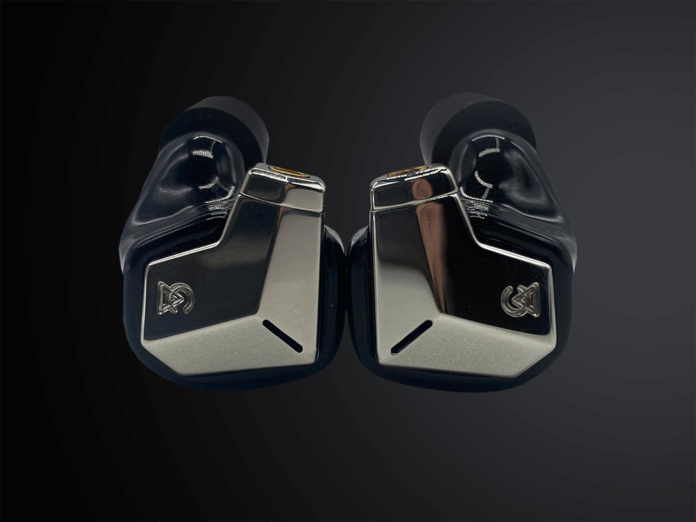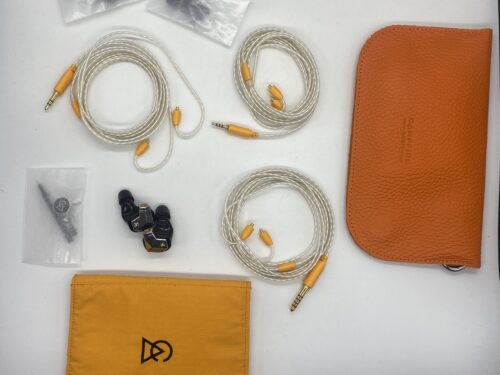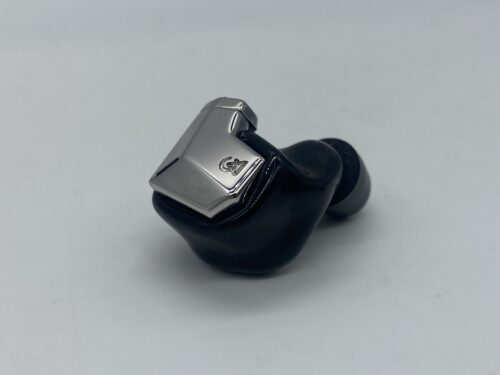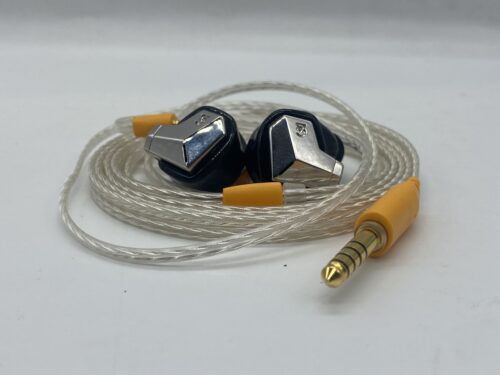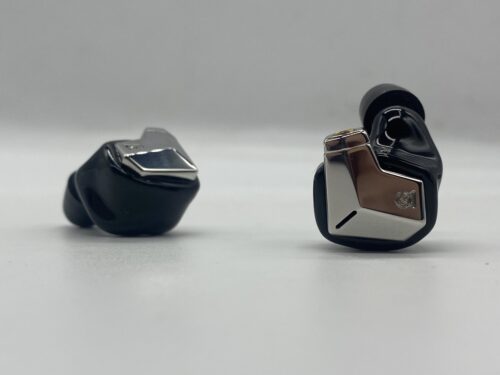Earlier this year, Campfire Audio released the Solaris Stellar Horizon and Andromeda Emerald Sea. They stand as two of their biggest heavy hitters but leave a hole where the original Andromeda used to be. To fill this $1,099 hole, Campfire Audio has made a new universal version of their Supermoon model. Before this, the Supermoon has been exclusively a custom IEM, and now everyone can get the chance to listen and try them without going through the CIEM process. So now that the Supermoon is a UIEM, where does it fit in Campfire’s catalog?
What You Get
- Supermoon IEMs
- 3 silver-plated detachable MMCX cables with the deluxe edition
- 2.5mm, 3.5mm, and 4.4mm
- Leather folding case
- S/M/L silicone and marshmallow tips
- Cleaning tool
Look & Feel
The way the Supermoon is constructed gives it the look of a custom IEM in UIEM form. It doesn’t have any signifiers that have made up Campfire Audio IEMs in the past, especially with its extended spout that looks a little unruly when you first look at it. From the outside, the Supermoon doesn’t look like a very comfortable IEM, but when worn I think that’s far from the truth. The Supermoon was almost a perfect fit for me, offering an ergonomic shape that acts like a puzzle piece. It gives you a perfect seal, especially with the marshmallow ear tips, which also help relieve pressure from the longer spout.
Design
The Supermoon houses a custom 14mm planar magnetic driver, making this one of the more premium planar IEMs on the market. It has a low impedance at 15 Ohms, but I would recommend an external DAC to get the most out of this sound. I used the Supermoon mainly with its 4.4mm silver-plated cable and an Astell & Kern HC2 as my DAC/Amp.
Soundstage
With the Supermoon, the soundstage takes on an interesting form. It expands from left to right with an impressive wingspan while giving instruments and effects plenty of air to breathe. The level of separation and layering on display here makes the Supermoon feel grand while not completely feeling like a dome. It sticks exclusively to a traditional stereo image but still finds ways to be dimensional and immersive. Spatial imaging does a great job translating the scope of massive soundscapes, even when specific sound elements don’t feel as tall. This reflects great accuracy with the Supermoon, being able to convey a holographic image while sticking to a precise stereo field. Everything feels more believable, with the sound being just on the cusp of an exterior headspace. It rarely plays with distance, but the sound consistently appears out in front of you rather than completely in your head.
Low End
I find certain IEMs from Campfire Audio to have an overexertion of bass frequencies. They prioritize resonance and warmth, which doesn’t usually match what I prefer in a colorful bass response. However, with the Supermoon, the low frequencies showcase great depth and balance with the rest of the sound signature. It’s full of expressive detail, applying clarity and realism with subtler vibrating textures. The bass makes the Supermoon feel like it has a proper shape, making the tone feel full. You may not get the most enticing kick from the transients though. This bass takes its time to feature any significant impact, but it sure is capable of it. I prefer this bass more for its sustained control, mixed with realistic grooves and textures.
Mids
Everything in the midrange is expressed naturally and without compromise. You can still notice the patented Campfire warmth somewhat, but it’s nowhere near bloated. The low mids have a touch of color but are more centered and tightly tuned. While the timbre remains mostly neutral, there is enough detail on display here to be gripped by. There’s a good reference here that doesn’t bore you and never feels clinical in any form. There’s an intimacy to the way instruments and vocals respond through the Supermoon. You won’t get that strike from certain notes, but they still cut through the mix all the same. Especially vocals, which appear in a direct fashion offering sleek transparency.
Highs
There’s less volume to these frequencies, but it doesn’t make the sound signature feel incomplete at all. I got the sense that there was less focus here, but the highs still provided that careful presence that the bass and mids do. It makes for an interesting balance, with the Supermoon giving you some good height to work with, but not calling much attention to themselves. Towards the top end of the spectrum, dynamic range starts to come more into play, with the Supermoon offering some minimal sparkle in some cases. You never feel like the Supermoon is limiting the highs in any way.
Summary
I’ve been waiting for Campfire Audio to hit me with a great IEM for a while, and it turns out it always existed in CIEM form with the Supermoon. With its wide stereo soundstage, smooth bass, and detailed musical response, the Supermoon might be my new personal favorite from the brand. It might be a bit too unexcited for some, but I think it provides a solid reference that just breaks that thousand-dollar mark.

The Campfire Audio Supermoon is available at Audio46.
Compare the ranking of various headphones, earbuds and in-ear monitors using our tools.
Discuss this, and much more, over on our forum.
---MAJORHIFI may receive commissions from retail offers.


